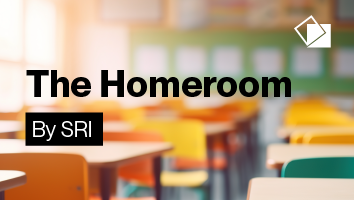In 2012, with funding from the Michael & Susan Dell Foundation, SRI Education researchers set out to examine changes unfolding in K-12 classrooms around the nation. We focused on the effectiveness of blended learning models in a sample of K-12 schools in California and Louisiana. We looked at the combination of traditional teacher-led instruction with online instruction used in these schools and at the impact it has on students’ achievement.

Existing Gaps
Our findings, released last month, highlight some of the foundational issues that need to be addressed for blended learning to be successful. For example:
- Schools still struggle with unreliable internet connectivity and inadequate bandwidth, especially when hundreds of students are trying to access an online program or site at the same time.
- Identifying programs where the content is modular and mapped to grade-level standards or topics is difficult for many teachers
- Online programs generate a tremendous amount of potentially valuable student data, but the information is often underutilized because reports and dashboards are sometimes difficult to interpret, and often don’t convey what students actually have learned about a certain topic.
Key Lessons for Ensuring a Better Experience – and Better Results – for Teachers and Kids
We’ve also found that implementation models are changing as teachers and administrators gain more experience with blended learning and refine their teaching approaches. Several key lessons have emerged for educators and school leaders who are starting to make a serious investment in blended models of instruction, including:
- Blended learning coordinators are critical to schools’ adoption of these models since they free administrators and teachers from the logistical burdens of implementation.
- Self-directed learning habits, such as setting weekly goals, are crucial for students to fully benefit from blended learning.
- For the most productive use of instructional time, students must be able to efficiently transition between instructor-led and online learning. For instance, single sign-on allows students to access online programs quickly.
- Administrators and teachers need to be prepared for technology issues. On the administrator side, this means making IT support available; on the teacher side, it means having alternative instructional plans ready when online access is unavailable.
Going Forward
Perhaps the most significant lesson is that we are still in the early stages of blended learning. What will the future of blended learning look like? How will it be implemented? We may see different models at work within the same school or, depending on the needs of the students, even within the same classroom. We may also see different teaching modes for different students within the same classroom, whether it is conducting small group instruction to help students struggling with a particular content area, leading discussion, or helping students synthesize what they just learned. We don’t yet know.
What we do know is that we need to develop models that serve all learners and that free teachers to be as effective as possible in helping to address students’ individual needs. With that in mind, we believe it’s time to stop asking broad questions about whether blended learning works and to focus instead on other questions: Which models and online programs are most effective for which types of students? Which are most effective in helping students at different levels and with different learning styles master different types of content? Only by researching the answers and building on a foundation of evidence-based insight can we begin to design reliable models and creative implementations that offer the range of supports needed to ensure all students succeed.
This post offers an overview of some of the findings of a May 2014 blended learning report released by SRI International and the Michael & Susan Dell Foundation. The schools and organization participating in the study included FirstLine’s Arthur Ashe Charter School, Summit Public Schools, Alliance College-Ready Schools, KIPP Empower Academy and Rocketship Education.
This post is also available on the Michael & Susan Dell foundation website.


